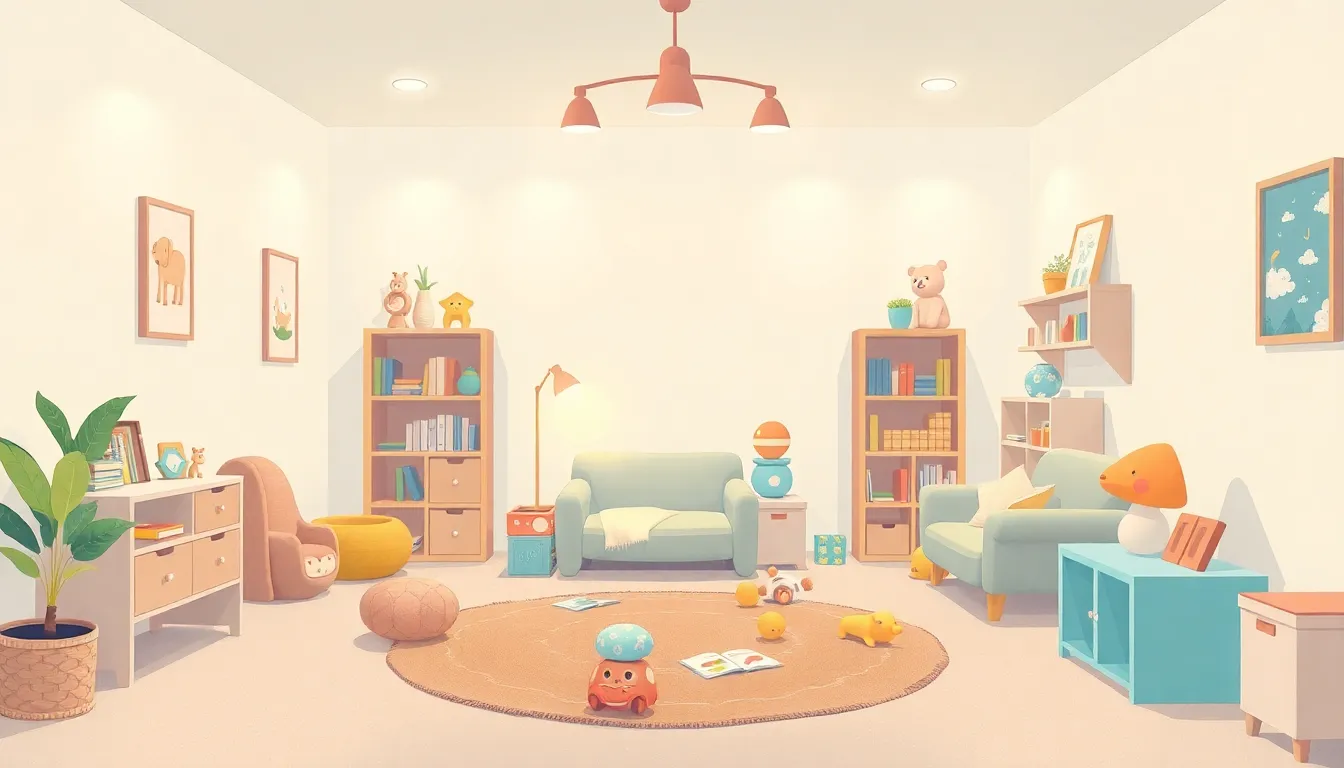Table of Contents
ToggleEvery parent knows the sweet sound of silence—especially when it comes to toddlers. Quiet time isn’t just a luxury; it’s a necessity for both little ones and their weary caregivers. Imagine a world where your toddler is happily entertained in their own little bubble, giving you precious moments to recharge. Sounds like a dream, right?
Benefits of Toddler Quiet Time
Toddler quiet time offers significant developmental advantages. It creates space for emotional growth and fosters independent play skills.
Enhancing Emotional Development
Emotional regulation improves during quiet moments. Toddlers learn to identify and express feelings without external distractions. Moments of solitude encourage self-soothing techniques. Children experience a sense of security, leading to increased confidence in their emotional responses. This time alone allows toddlers to process experiences, reducing anxiety levels. Engaging with toys or books helps them explore their thoughts and feelings. Independent play during quiet time cultivates resilience, making them better equipped to handle social interactions.
Encouraging Independence
Independent play during quiet time encourages toddlers to explore on their own. They gain the chance to make choices without parental guidance. Engaging with activities solo fosters problem-solving abilities. Children learn to entertain themselves, decreasing reliance on adults for stimulation. Quiet time also provides opportunities for self-discovery. As they navigate toys or crafts independently, toddlers build essential skills. Their sense of agency strengthens over time, leading to more confident decision-making. Independence nurtured during quiet moments extends into other areas of life, promoting overall development.
Creating a Quiet Time Routine


Establishing a quiet time routine benefits both toddlers and parents. Consider these important aspects to create an effective routine.
Setting a Consistent Schedule
Consistency plays a key role in establishing quiet time. Parents should select a regular time each day for this period, ideally aligning it with the toddler’s natural rhythms. For instance, scheduling quiet time after lunch helps many toddlers transition from energetic play to a more relaxed state. It’s essential to maintain this schedule even on weekends, ensuring that toddlers anticipate this comforting ritual. Following a clear routine reinforces expectations and aids toddlers in adjusting smoothly to quiet moments.
Choosing the Right Environment
The environment significantly influences the effectiveness of quiet time. Brightly lit, noisy spaces can disrupt focus, making it harder for toddlers to engage in independent play. Selecting a cozy area with minimal distractions promotes a peaceful atmosphere. Soft lighting, comfortable seating, and a selection of quiet toys or books create an inviting space. Additionally, parents can use calming sounds or music to enhance the environment. A comfortable routine provides toddlers with the security they need, encouraging a positive experience during quiet time.
Activities for Toddler Quiet Time
Engaging toddlers in quiet time activities keeps them entertained and promotes development. These activities support creativity and learning while parents enjoy a restful break.
Calming Crafts and Coloring
Toddlers find joy in calming crafts that enhance fine motor skills. Simple activities, like coloring with crayons or painting with watercolors, stimulate their creativity. Incorporating nature-themed coloring pages can spark curiosity about the environment. Offering materials like stickers or textured papers encourages exploration and creativity. By providing a variety of colors, toddlers can express their emotions through their artwork. Quietly focusing on these crafts helps them practice patience and concentration. Setting up a dedicated coloring station can enhance the experience, minimizing distractions and allowing children to immerse themselves in their creative projects.
Storytime Suggestions
Storytime builds cognitive skills and fosters a love for reading. Choosing age-appropriate books filled with engaging illustrations captures toddlers’ attention. Incorporating interactive elements, such as lift-the-flap or sound books, makes the experience more captivating. Encouraging toddlers to retell stories develops their language skills and boosts confidence. Reading familiar favorites allows them to predict outcomes, enhancing their understanding. Establishing a cozy reading nook with soft cushions and low lighting creates an inviting atmosphere. Regularly rotating books keeps the storytime experience fresh and exciting for toddlers, fostering a sense of anticipation for each session.
Challenges and Solutions
Quiet time can present challenges, but with strategies, parents can make this period effective for toddlers.
Dealing with Resistance
Toddlers often resist quiet time. Offering choices, like different activities or locations, can create a sense of control. Encouraging independence during this decision-making fosters a willingness to engage. Starting quiet time with a soothing ritual, like reading a book or playing soft music, may ease the transition too. Parents should remain patient; consistency builds expectation and understanding over time.
Adapting to Different Personalities
Every toddler has a unique personality influencing their quiet time experience. Some thrive with structured activities, while others prefer free play. Observing how each child interacts with different environments can shape effective routines. Creating a flexible schedule that accommodates both active and calm preferences helps in meeting individual needs. Allowing space for exploration ensures that toddlers feel secure and engaged, enhancing their ability to relax during quiet time.







